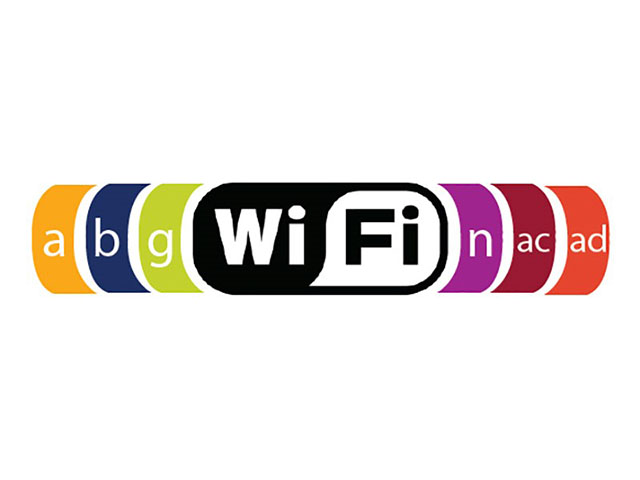These days, there are plenty of cases that you hit ۸۰۲.۱۱xx as Wi-Fi standard when checking specifications of a smartphone, tablet, laptop, motherboard, or even a mobile platform like Snapdragon ۸۴۵. Considering the rapid changes of this standard over the last few years (which will continue to be); this article will introduce you to the latest standards of Wi-Fi.
History
۸۰۲.۱۱ is a set of specifications approved by the IEEE for Wi-Fi wireless networks. The first version of the standard was introduced in ۱۹۹۷, operating at ۲.۴ GHz and with a maximum transfer rate of ۱.۲ Mbps. Two years later, in September ۱۹۹۹, two ۸۰۲.۱۱a and ۸۰۲.۱۱b standards were released, the first in the ۵ GHz band and the second in the ۲.۴ GHz band. The ۸۰۲.۱۱b data transfer rate with nearly ten times increase reached to ۱۱ Mbps. On the other hand, the ۸۰۲.۱۱a transfer rate was equivalent to ۵۴ Mbps, although the use of a higher bandwidth band made it more vulnerable to the obstacles and had a shorter range.
In ۲۰۰۳, the standard ۸۰۲.۱۱g was released, combining the best features of the two previous standards. Simply put, this standard worked in the ۲.۴ GHz frequency band and at ۵۴ Mbps data rate. In this way, users were able to experience a truly usable wireless network for various uses.
Fast wireless networks
At that time, cable networks of ۱۰۰ Mbps were considered as a standard for public applications, and wireless networks were following them with some distance. But Gigabit Ethernet networking and equipment were gradually entering the consumer market. While the Gigabit Ethernet ports were pre-installed on motherboards and many routers or switches provided such ports to users, the speed gap of wireless networks got quite obvious.
IEEE released the ۸۰۲.۱۱n standard in ۲۰۰۹, using both ۵ and ۲.۴ GHz frequency bands. This standard supports the ۱۵۰Mbps transfer rate, which puts it at a level higher than Ethernet ۱۰/۱۰۰. However, the standard also introduced a new feature called Multi-Input Multiple Output (MIMO), which allowed the use of multiple antennas to have virtually several input and output streams simultaneously. This feature allows the ۸۰۲.۱۱n standard to deliver a maximum transfer rate of up to ۶۰۰ Mbps. Majority of wireless networks you use today are based on this standard.
Entering the gigabit range
The next Wi-Fi standard, the ۸۰۲.۱۱ac, was released in ۲۰۱۳. This standard was fully compatible with ۸۰۲.۱۱n and was actually released as an evolutionary version. The new standard operates in the ۵ GHz frequency band, but routers that conform to this standard also support ۲.۴ GHz frequency band and thus cover all ۸۰۲.۱۱n-compliant devices. The ۸۰۲.۱۱ac has been able to bring the transmission rate of the networks to a gigabit level, although at the cost of lower range. This standard, in its evolution process, relying on three features, has greatly increased the speed of data transfer:
۱ – More MIMO streams (۸ instead of ۴ in the previous standard)
۲. Wider frequency channel (۸۰ and ۱۶۰ MHz instead of ۴۰ MHz in the previous standard)
۳ – Introduction of MU-MIMO (Multi-User MIMO) feature that allows delivering MIMO streams to multiple users.
By combining all these features, ۸۰۲.۱۱ac aggregate transfer rate reaches to about ۷ Gbps (close to ۱ gigabyte per second).
WiGig (۸۰۲.۱۱ad)
The first point to note about this standard is that it’s not compatible with any of the previous standards since it essentially uses a different frequency spectrum in the range of millimeters, the ۶۰ GHz range. Utilizing this frequency spectrum allows ۸۰۲.۱۱ad reach transmission rate of ۷ Gbps but at a maximum range of ۱۰ meters, which is practically limited to below ۵ meters. In general, it can be said that this standard is designed to provide the highest possible wireless transfer speed in your personal space.
Of course, some manufacturers of networking equipment have provided
products that support all three ۲.۴, ۵, and ۶۰ GHz frequency bands, but
note that they are running in separate subnets. And you should not
confuse this issue with ۸۰۲.۱۱ad compatibility with other standards.
Telecomm and Networking


